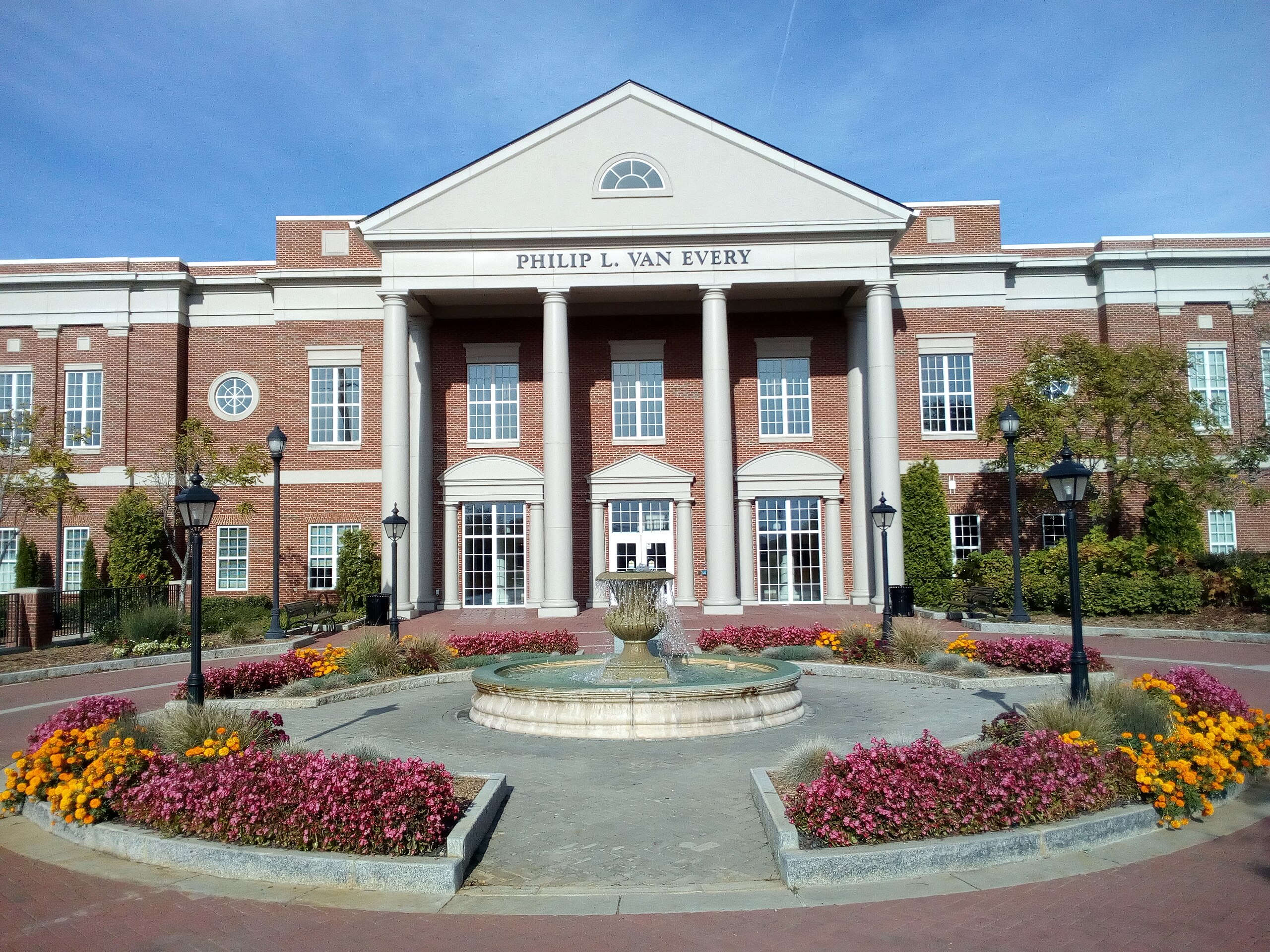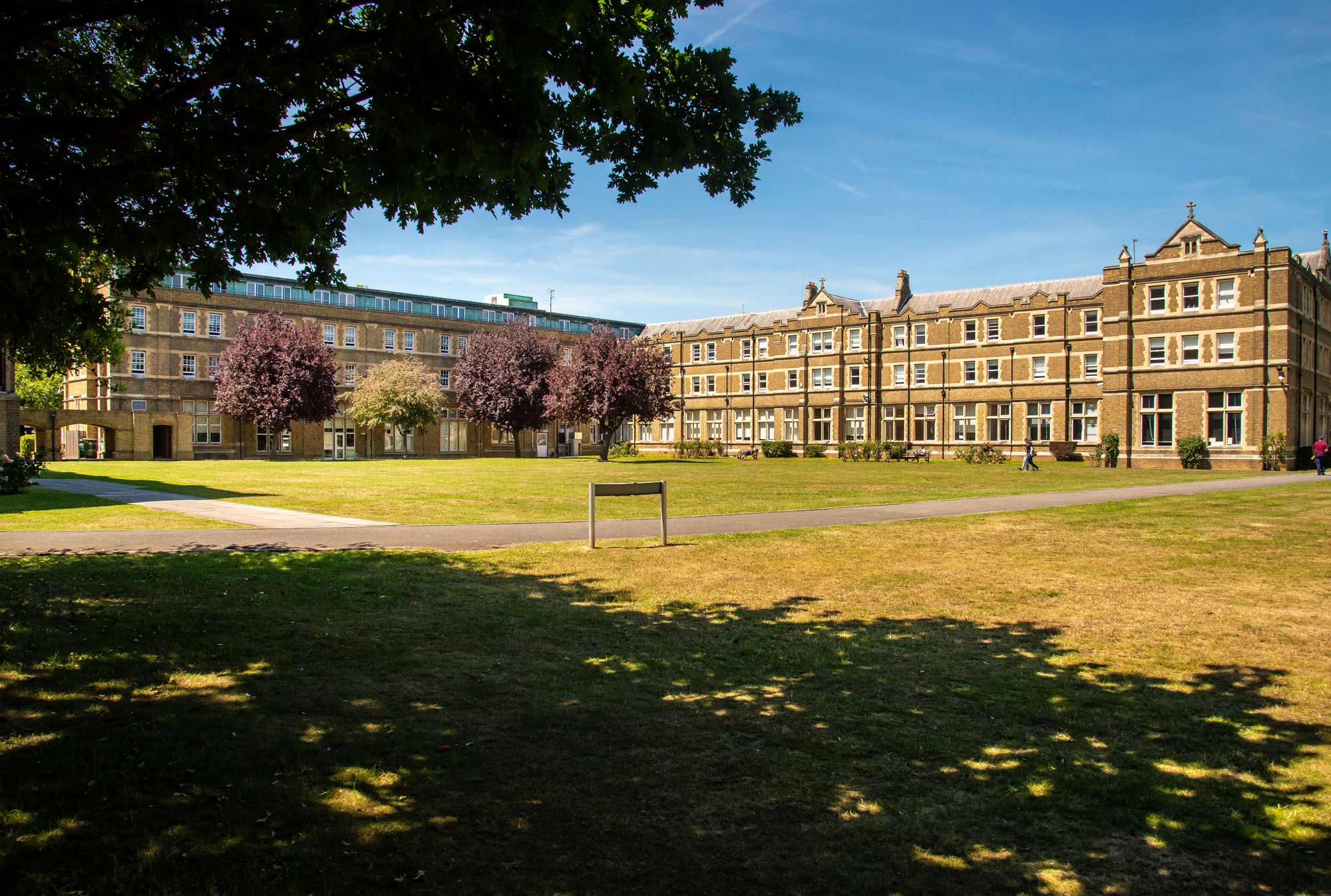University of Notre Dame
How Notre Dame Used the Panopto + Zoom Integration to Streamline and Elevate Virtual Learning

Erfolge
150 Fully-Enabled Lecture Capture Spaces
Fully Remote-Controlled Cameras for Lectures
Implemented Rapid Shift of Unified Technology Systems
Intro
Mit Beginn der COVID-19-Pandemie im März 2020 sahen sich die IT-Teams des Office of Information Technologies (OIT), Notre Dame Learning und ND Studios Teaching & Learning Technologies (TLT) der University of Notre Dame gezwungen, die unterschiedlichen Systeme und Tools für virtuelles Lernen so schnell wie möglich für die gesamte Universität auf einen gemeinsamen Nenner zu bringen.
Notre Dame had been a customer of both Zoom and Panopto for several years, using each system independently as needed. Before the pandemic, the university used Panopto for scheduled classroom recordings and lecture capture within its learning management system (LMS), and it used Zoom as a communications platform for video conferencing. Upon learning of the Panopto + Zoom integration, Office of Information Technologies staff decided to integrate and scale the two systems for campus use.
As students returned to campus for the Fall 2020 semester, the university offered dual-mode teaching and learning. To elevate that experience, integrated technology systems were essential. Leveraging Panopto and Zoom together provided key elements that supported the University’s concept of the “classroom as an ecosystem.” Usage of both Panopto and Zoom skyrocketed.
Moving into the 2021-2022 academic year, Notre Dame invited students back to in-person classes, and the Panopto + Zoom integration continued to make an impact. As a result of the integration, the University has now successfully streamlined enhanced face-to-face learning and given professors new tools to improve their learning outcomes. Even with a shift in the mode of teaching and learning, the students and faculty supported this new educational experience.
Preserving the Classroom as an Ecosystem
With its commitment to community and a human-centered approach, the ND Studios TLT team worked toward creating an interconnected ecosystem within each classroom. Each part of the ecosystem works together and supports the other. “The problem-solving that happened that summer [2020] was around enabling that ecosystem for our faculty and students,” says Tom Marentette, IT Solutions Architect and Streaming Program Manager at Notre Dame. “And that led us to focus on ease-of-use, consistency, replicability, and scale.”
To preserve the classroom ecosystem, the Notre Dame IT team needed equipment and systems that would work together seamlessly, allowing instructors and students to remain focused on why they were there – to teach and to learn – despite the circumstances of the time. Additionally, all class recordings must be accessible in the university’s LMS.
“Our Audio Video Technologies (AVT) team, in consultation with the TLT team, ND Learning, and IT architecture colleagues, responded to the urgent task of planning, designing, ordering, and implementing AV systems to enable real-time participation between remote students and their instructors and classmates in the physical classroom,” says Dan Skendzel, Executive Director, ND Studios and Teaching and Learning Technologies at Notre Dame. “The Zoom + Panopto integration was a critical element that facilitated the real-time interaction and the asynchronous access to the instructional material in our LMS.”
The university also knew it was crucial to offer a consistent experience. “We wanted everybody to have the same experience for recording, the same expectations for the control system, and the same playback experience,” says Charles Barbour, Educational Technologist and Panopto administrator at Notre Dame. “[The consistent set-up] allowed us to focus on having an equitable experience for everyone.”
Consistency started with Notre Dame’s physical classroom set-up, which reflects seven tiers of classroom standards. When social distancing was necessary, ballrooms and other large areas were converted into classrooms with the same technology. “All of those rooms still had the same capabilities and standards in place,” says Barbour. “While the classroom might have looked different, the experience was the same.”
Each classroom space was upgraded to offer an identical set-up:
- Full lecture capture expanded from 15-20 classrooms to more than 150 spaces
- New microphones and audio processors
- Pan, tilt, and zoom cameras can be controlled remotely. They support podiums, stages, tables, chalkboards, whiteboards, student-facing views, and more.
“We were fortunate that we were a little bit ahead of the curve,” says Marentette. While Notre Dame did experience some supply chain issues and backlog of items, the installation and set-up ultimately supported a seamless Panopto + Zoom integration.
With this set-up, all faculty members were trained on how to start and record a Zoom meeting with the confidence that every recording will automatically transfer to Panopto, with no sharing of links or back-end work required. All students know how to participate in Zoom and view Panopto recordings for playback. Integration with the LMS gives students and professors quick and easy access to video. This seamless system enables ease-of-use for anyone on campus, from students and faculty to administration and academic groups.
With a wide range of technical competency among faculty, consistency and standardization helps eliminate variability and reduce confusion. “It was a very straightforward and consistent experience across the board by ensuring all recordings go into Panopto,” says Barbour. The university also established a multi-tier technology support system through Help Desk services, classroom support, training, and workshops.
“The consistent playback and recording experience across set-up allowed us to focus on having an equitable experience for everyone.”
Charles Barbour, Educational Technologist and Panopto Administrator, University of Notre Dame
Zoom-Programmierung optimiert die Benutzererfahrung
The goal of the Notre Dame IT team is to establish consistency of the user experience and ease-of-use for all instructors, from tech novices to super users. As part of this, Notre Dame’s IT developers wrote a program called Zoom Appointment Provisioner (ZAP) through Zoom APIs to pre-create a unique meeting link with security settings for each course.
This allows a professor to arrive in the classroom and simply start a Zoom meeting without having to worry about multiple control systems. The process is simple: login to the ND network, turn on the projector, open Zoom, click Record to the Cloud, and the recording happens automatically. “They didn’t have to do anything extremely unusual, and from that perspective, it was an overwhelming success,” says Barbour.
Die IT-Abteilung von Notre Dame war vorbereitet
Nach Einrichtung der Zoom-Integration Panopto + konnte Notre Dame schnell umschwenken und war entsprechend vorbereitet. Selbst als die Lehre wieder in Präsenz stattfand, sorgte die Integration weiterhin für Einheitlichkeit. „So sieht unsere momentane Situation aus“, sagt Marentette. „Auch wenn wieder alles im Präsenzstudium stattfindet, sind wir trotzdem vorbereitet. Wenn wir dann erneut umschwenken müssen, ist alles schon einsatzbereit. Uns ist wichtig, für die Zukunft gerüstet zu sein."
Durch die Integration von Panopto und Zoom konnten die Dozenten auch neue und andere Inhalte in ihrer Lehre einbauen. Dozenten wie Meghan Sullivan, Professorin für Philosophie und Direktorin des Notre Dame Institute for Advanced Study, setzen Videos ein, um die Diskussion im Kurs zu vertiefen. Im Herbst 2020 planten Sullivan und ein Kollege von der Notre Dame Law School eine spezielle Lehrveranstaltung, in der es darum geht, inwieweit Schriftsteller die Vorstellung von Zukunftstechnologien und den damit verbundenen moralischen Problemen beeinflussen. Ein renommierter Science-Fiction-Autor, der in Seattle lebt, sollte ein paar Mal persönlich an dem Kurs in South Bend, Indiana, teilnehmen. Da er jedoch wegen der Pandemie nicht reisen konnte, drohte die Lehrveranstaltung ganz auszufallen.
„Ohne Zoom und Panopto und ohne die Aufrüstung der Vorleseräume hätte der Kurs damals gar nicht stattfinden können", sagt Sullivan. Dank der Integration von Panopto und Zoom konnte sich der Autor jede Woche per Fernzugang in den Kurs einklinken und wurde zu einem vollwertigen Teilnehmer der Veranstaltung. Die Studierenden hatten so einen echten Experten in ihrer Mitte und konnten sich mit der Materie stärker befassen.
„Wenn Fragen auftreten, kommt man in der Regel auf den eigentlichen Hörsaal zu sprechen, und das führt unweigerlich zu den pädagogischen Aspekten", sagt Steven Varela, Direktor für Lehr- und Lerntechnologien in Notre Dame. „Wir wollten diese Beziehungen und die praktische Zusammenarbeit optimieren.“ Durch den umfassenden Support-Rahmen ist die Universität in der Lage, Fragen der Gleichberechtigung anzusprechen, so dass alle Dozenten über die erforderlichen Ressourcen verfügen und bei der Fehlerbehebung nicht allein gelassen werden.
Die Leistungsfähigkeit von Videoinhalten
Many faculty members have tapped into video to enhance traditional lectures with the addition of live Zoom office hours, remote guest speakers, and other learning opportunities. Some instructors allow students to submit a video assignment as an alternative to writing a paper. Some offer “responsive education” by creating and uploading short videos to address students’ questions as they come up. “What I’ve heard overwhelmingly from both faculty and some of the students who have been able to take advantage of this is that many have become more comfortable with the creation of video content,” says Barbour.
Sullivan says that she has experimented with video assignments, Zoom breakout rooms, and asynchronous videos on specific topics. “Our students love short explainer videos, so we get great feedback on the 2- to 4-minute, well-written explainer videos that we make available to them,” she says. “I don’t know how many of them will listen to a 45-minute lecture that’s taped.”
When it comes to lecture capture, there are some key benefits, primarily that students have the opportunity to listen and process information while in class and use the video recording for playback and review. “So many students have reported to me how valuable [it is to have] the ability to go back and review the content,” says Barbour. “None of that is possible without the two systems converging and the benefits of both of those – the tremendous value of the recording and distribution provided to our students.”
„Panopto ist sehr praktisch für die Nachbereitung von Inhalten. Bei virtuellen Lehrveranstaltungen wurde die Vorlesung aufgezeichnet und auf Panopto hochgeladen, von wo aus die Studierenden darauf zugreifen konnten. Angenommen, ich habe die Vorlesung verpasst, weil ich ein Vorstellungsgespräch hatte – die gesamte Vorlesung ist so gespeichert, dass ich sie mir einfach ansehen kann, anstatt wie sonst üblich einen Kommilitonen oder Kommilitonin nach seiner oder ihrer Mitschrift fragen zu müssen.“
Blick in die Zukunft
Notre Dame setzt zwar auf Präsenzveranstaltungen ist aber der Ansicht, dass sich die beiden Lehrveranstaltungensformen – Präsenz- und virtuelle Lehrveranstaltungen – ergänzen anstatt im Widerspruch zueinander zu stehen. Die Technologie verändert die Art und Weise der universitären Lehre. Die Integration ist für Notre Dame erfolgversprechend, da die Dozenten ihre Lehrmethoden um Videos weiterentwickeln und ergänzen können, und außerdem vorbereitet sind, wenn sie in Zukunft auf virtuelles Lernen umsteigen müssen.
Das TLT-Team der ND Studios betrachtet Video als Chance. „Wir haben einige offizielle Umfragen unter Dozenten und Studierenden durchgeführt, und die Ergebnisse bringen uns einen großen Schritt weiter“, sagt Varela. „Nach der Pandemie mit dem Einsatz von Panopto und Zoom sagten die Dozenten, dass sie sich mehr berufliche Weiterbildung für kurze, konzeptorientierte und zielgerichtete Videos wünschen, weg vom fast zweistündigen Vorlesungsmitschnitt.“
Die Dozenten können jetzt mithilfe dieser digitalen Hilfsmittel das Präsenzstudium verbessern und die Beteiligung der Studierenden fördern. In Zukunft werden einige Dozenten Zoom auch weiterhin für Sprechstunden nutzen, obwohl sie es nicht im eigentlichen Lehrbetrieb einsetzen, und diese Frage-Antwort-Gespräche dem gesamten Kurs als Mitschnitt zur Verfügung zu stellen.
Die Studierenden selbst interessieren sich für die neuen Möglichkeiten der Videotechnik. „Da [die Technik]nun schon mal da ist und schon zur neuen Normalität geworden ist, sollten wir sie auch in Zukunft nutzen“, meint Wang. „Viele der Vorteile von Videokonferenzen bleiben bestehen, denn die Technik steigert die Produktivität in unserem Leben.... Asynchrone Videos oder Live-Videokonferenzen sind auch für uns Studierende eine sehr praktische Sache.“
Das TLT-Team der ND Studios ist ein Vorreiter in Sachen virtuelle Realität und anderen Spitzentechnologien für die Lehre. Die Verwaltung hat eine explosionsartige Zunahme der Nachfrage nach virtuellen Veranstaltungen festgestellt, zu denen Konferenzen, Diskussionsrunden und Webinare gehören, in denen Zoom eine zentrale Rolle spielt.
Durch synchrone und asynchrone Videos kann Notre Dame außerdem mehr Bildungsmöglichkeiten anbieten und Lücken schließen. Die Universität legt großen Wert auf Vielfalt, Gleichberechtigung und Inklusion und betrachtet Video als eine Möglichkeit, Studierenden, die aufgrund von Krankheit oder Reisen nicht an der Lehrveranstaltungen teilnehmen können, eine gleichberechtigte Erfahrung zu bieten.
„Entscheidend ist, wie wir die Präsenzveranstaltungen mit diesen Hilfsmitteln hin zu mehr Gleichberechtigung und Beteiligung gestalten können“, so Varela. Während die Präsenzveranstaltungen für die Bildungserfahrung in Notre Dame von zentraler Bedeutung sind, ermöglicht die Panopto- und Zoom-Lösung ein kontinuierliches Lernen und ein kontinuierliches Engagement für die Gemeinschaft.




